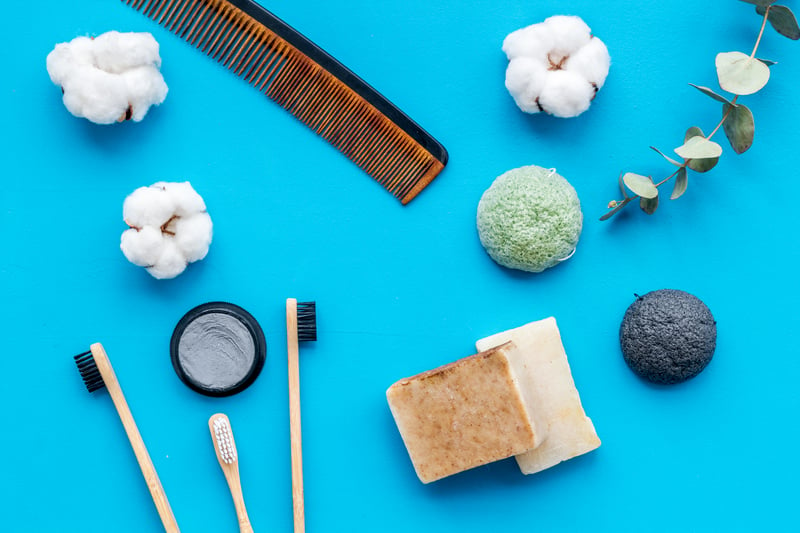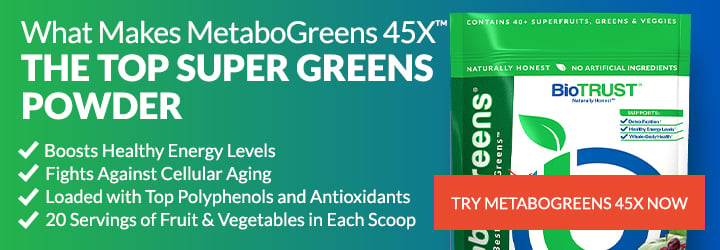The Most Important Foods & Consumer Goods to Buy Organic

I keep a copy of the Dirty Dozen and Clean Fifteen on my phone for fast reference in the produce aisle, but I’m not sure if I need to be as vigilant when it comes to other food items, like meat and dairy, or consumer goods, like toothpaste and tampons, for example.
What should I buy organic? And what can I get away with just buying conventional to save money?
-Linda
A: Linda, thanks so much for your question. You’re already off to a great start by referring to the Environmental Working Group (EWG) and basing your produce purchases on its Dirty Dozen and Clean Fifteen lists.
Since 2004, the EWG has ranked popular fruits and vegetables by the amount of pesticide residues, so you can better decide which products to buy organic (such as berries, leafy greens, potatoes, and apples) and which ones matter less; in other words, those with fewer pesticide residues on the conventionally grown samples.
Produce that has thicker skin—think pineapples, melons, and avocados—are typically safe bets to purchase non-organic. Just remember to give them a good wash before you start slicing to wash off any residues.
You’re also right to pick and choose to help save on costs as organic produce can cost up to 20% more than conventionally grown options, and that can add up quickly on an already expensive grocery list. It can cost even more for organic meat, eggs, and milk. Plus, many grocery stores simply don’t have many organic options, so you do the best you can where you’re at.
What Does Organic Mean Anyway?
Words like “organic” and “natural” get thrown around a lot. But what does “organic” actually mean?
Unlike natural, which has no real definition and is really just a marketing term, when you see the USDA Organic seal, it means that product meets strict government standards that prevent the use of most conventional pesticides as well as fertilizers that aren’t made naturally or use sewage sludge, ionizing radiation, and genetically modified organisms (GMOs).
If you’re looking at animal products (meat, milk, and eggs, for example), the Organic seal also means the animals are free from antibiotics and hormones and that the animals were “raised in living conditions accommodating their natural behaviors (like the ability to graze on pasture).”
The goals of organic farming include:
- Enhanced soil and water quality (protecting the environment)
- Reduced pollution
- Increased safe, healthy livestock environments and behavior
There are also four distinct labeling categories for certified organic products. If it says:
- “100% organic”, you’ll have a product where all of the ingredients are certified organic.
- If it’s labeled “organic”, that means it’s made with 95% organic ingredients.
- If it’s “Made with Organic Ingredients,” then it needs to contain at least 70% organic ingredients.All ingredients, including the up to 30% allowed non-organic ingredients, must be produced without GMOs in products labeled “made with organic ingredients.”
The final category refers to multi-ingredient products with less than 70% certified organic content, which fall under the “specific organic ingredients” category. Those products don’t need to be certified, they can’t display the USDA Organic Seal, or advertise using the word “organic” on the main product display.
One misnomer about the organic label is that it doesn’t necessarily mean pesticide-free, however. While farmers can’t use synthetic fertilizers or pesticides, they can use those made from natural ingredients. In addition, farmers can used green manure (plant waste), livestock manure, and compost to improve the soil. They can also employ plant rotation, cover crops, and mulch to control weeds and predatory insects, insect traps, and natural pesticides, which may still pose risks. That’s another reason to consume a wide variety of produce—so you aren’t overexposed to a single pesticide, “natural” or otherwise.
Again, those labeled as “all-natural” or “farm-raised” may not mean much, if anything, as those terms aren’t well defined, and as a result, they’re not subject to regulatory scrutiny.
Now that we have established what organic means, check out our list of what to buy organic (and what you can avoid).
What Foods to Buy Organic
Beef, Chicken and Dairy
One area where it’s important to choose organic whenever possible is with animal products. For example, conventionally-raised cattle are typically given synthetic hormones like growth hormones to help the animals grow faster and fatter, and they’re frequently injected with antibiotics to combat a number of issues associated with extremely poor conditions.
Animals raised organically are given food without synthetic pesticides and fertilizer and also aren’t freely given antibiotics, which can wind up in the meat and lead to the development of antibiotic resistant bacteria. (The animals may, however, be treated with medicine if they are sick, but they are no longer consider organic.)
In addition, studies have shown that organic meat and dairy from have higher levels of beneficial fats like omega-3 fatty acids and conjugated linoleic acid (CLA) as well as healthier ratios of fats.
If you do occasionally buy conventional animal products, it’s a good idea to trim off both the skin and fat as that’s where the pesticides and hormones are concentrated. Since that’s especially tricky with dairy, it’s worth searching out organic versions of cheese, yogurt, and milk when possible.
Seafood
Unfortunately, there aren’t any USDA standards for organic seafood, so even if you find it, there’s no guarantee as to what you’re getting. Instead, look for wild-caught fish/seafood, and avoid fish that’s likely to be higher in mercury or other contaminates. Here is a list of the 9 Worst Fish to Eat (i.e., those to avoid) along with 11 options to reach for instead, including wild salmon, Pacific sardines, and Atlantic mackerel.
Coffee
Many of us start our days with a buzz—a caffeine buzz, that is. Yet coffee is typically grown with a ton of pesticides and clocks in as the third-most-sprayed agricultural crop. And since coffee is a daily (and often multiple times daily) habit, choosing organic, and better yet, fair trade organic, coffee is worth the extra cost.
Grapes & Wine
If how many of us start the day with a cup of Joe, what about how we finish it? Grapes have consistently found their way onto the Dirty Dozen list, and what’s a popular night cap? That’s right: Wine! And of course, wine is made from fermented grapes that, if non-organic, are still likely wearing all their pesticide-laden skin. If you’re going to sip on a glass of wine after a long day, it’s worth choosing organic version to reduce exposure.
Buy Local and In Season
Another tip to help ensure you’re buying the freshest, cleanest produce available is to grow your own or buy in-season produce locally. You’ll get produce that is at its peak freshness, providing the most delicious flavor. And it’s also less likely to be saturated in pesticides.
Do a search for local farmer’s markets in your area to discover new options—you may even find a new favorite vegetable or fruit you’ve never found in the grocery store before.
Whether or not you’re eating organic, you can’t go wrong with a diet that provides a rainbow of vegetables and fruits. Just remember, no matter where you purchase or pick your produce, wash it for at least 30 seconds under running water to remove as much residue as possible.
And just because a food says “organic” doesn’t mean it’s any healthier. If it’s found in a box or package, it’s still likely overly processed (and priced) junk food. Added sugar is still sugar, and poor-quality fats are still pro-inflammatory no matter how you slice it.
What Consumer Goods to Buy Organic?
Okay, now you’re clear about which organic foods to prioritize, but what about the products that just come into contact with your skin or that you spit out after use (e.g., toothpaste, tampons, and topicals)?
Topicals
Because your skin is your largest organ and serves as a protective barrier against toxins, it does make sense to be careful what ingredients you rub into it. There are very good arguments, in fact, to avoid products that contain parabens, phthalates, and sulfates, which have been shown, for example, to be endocrine disruptors and potential carcinogens, as well as synthetic fragrances, which may be hidden hotbeds for those very same potentially harmful compounds.
But is it really important to fork out the extra money for organic products?
The short answer, most likely, is “not necessarily.” Organic consumer goods products like cosmetics and skincare products aren’t as well-regulated as organic foods, so even if a product is labeled as organic doesn’t mean it is free from toxins or even lives up to the “organic” claim.
What’s more important than looking for organic is to look for products with ingredients that have been shown to be safe and effective and backed by science. Read the ingredients list and avoid those shown to be harmful (e.g., parabens, phthalates, sulfates, and synthetic fragrances) rather than necessarily going exclusively organic.
Tampons
What about products that go “inside” like tampons. Like the mouth and eyes, the vagina is made up of a mucous membrane, which secretes and absorbs substances more readily than the rest of the skin. However, how much the vagina absorbs depends on what stage you are in your menstrual cycle. And at this point, there hasn’t been any research at all on organic cotton vs. conventional cotton/rayon (made from wood pulp) tampons or on what or how much is absorbed through the vagina.
It’s worth noting that all tampons are actually regulated by the FDA as Class II medical devices, and manufacturers are required to carefully monitor toxins to reduce exposure. For example, levels of dioxin (a toxic carcinogen) are carefully monitored as are ingredients that may allow bacterial growth (to help prevent the potentially fatal toxic shock syndrome).
That said, several companies now offer tampons made with organic cotton (such as The Honest Company, Seventh Generation, Lola, and many others), which come with a higher price tag but are also free from dyes, plastics, bleach, fragrances, and pesticide-treated cotton.
While companies may claim their products are non-GMO and free from pesticides, they aren’t measured and haven’t been studied, so how big of a difference they actually make is up in the air.
Again, it’s worth looking for products that are free from added fragrances; however, going organic doesn’t appear to be necessary, and conventional tampons appear to be safe for the vast majority of women when used correctly.
Of course, if your concern is for the environment (which is a very important consideration), then you’ll lessen your footprint much more dramatically by choosing a menstrual cup or reusable period panties or pads over tampons. And because they’re reusable, they may also help you save cash over time, though the upfront cost is higher.
Toothpaste
You’re reading labels, you’re prioritizing when to purchase organics, so you should be able to grab any old toothpaste that’s on sale (or that you like the flavor of), right? Perhaps not. There is a wide variety of toothpastes, and some do appear to contain ingredients that can be harmful.
Most interestingly of all is that some experts suggest that you don’t really need toothpaste. The bristles on your toothbrush are what remove the debris from your teeth that leads to decay. However, toothpaste may also help by removing bacteria and by making brushing your teeth more enjoyable, so you’ll do it for longer. The key is to ensure you are brushing at least twice a day for at least two to three minutes each session.
There are, however, troubling ingredients in some conventional toothpastes like sodium lauryl sulfate, which is a skin irritant that can cause mouth ulcers, and saccharin, which is an artificial sweetener that can disrupt the microbiome in the mouth among other ill effects.
Organic toothpastes, on the other hand, typically forgo these types of harsh chemicals and instead use essential oils that naturally freshen breath and may help fight bacteria.
Do you need to choose organic? Perhaps not. But it is worth reading through the ingredients and avoiding harsh chemicals as well as artificial flavoring, dyes, and glycerin, as it may block remineralization.
What to Buy Organic? A Recap
If you have a coupon, run into a sale, and/or have a local discount retailer that provides organic products, you may want to choose to buy organic more often. But if you don’t, then knowing when to prioritize organics and when they don’t matter as much can help you save your hard-earned cash while helping protect your overall health.
At the end of the day, whether your next purchase is organic or not, it is worth taking the time to read the labels to avoid ingesting or slathering on harsh chemicals and fragrances that may cause more damage than good.







